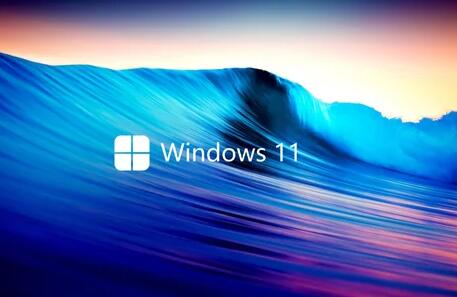Finding duplicate files on Windows 11 can help you free up valuable disk space, organize your files better, and improve system performance.
1. Duplicate Files
Duplicate files are copies of the same file saved in different locations. These can be exact copies or similar files with slight variations. Common sources of duplicates include:
Downloads: Multiple downloads of the same file.
Backups: Backup tools creating multiple copies.
Photo Libraries: Importing the same photos from multiple devices.
Documents: Saving different versions of the same document.

2. Manual Methods to Find Duplicate Files
2.1 Using Windows File Explorer
You can use File Explorer to manually search for duplicate files, though this method is less efficient for large numbers of files.
Open File Explorer:
Press Win + E to open File Explorer.
Search for Files:
Navigate to the folder or drive where you want to search for duplicates.
Use the search bar at the top-right corner and enter a file type or name, such as *.jpg for JPEG images.
Sort and Compare:
Click on the “View” tab and select “Details” to view file details.
Sort files by name, size, or date modified to identify potential duplicates.
Manually compare file details to identify duplicates.
Delete Duplicates:
Select duplicate files and press Delete to remove them.
2.2 Using Windows PowerShell
PowerShell can be used to find duplicate files by comparing file hashes.
Open PowerShell:
Press Win + X and select “Windows Terminal (Admin)” or “PowerShell (Admin).”
Run Script:
Use the following script to find duplicate files in a directory:
powershell
复制代码
$folder = “C:\Path\To\Your\Folder” $hashes = @{} Get-ChildItem -Path $folder -Recurse | ForEach-Object { if ($_ -is [System.IO.FileInfo]) { $hash = (Get-FileHash $_.FullName).Hash if ($hashes.ContainsKey($hash)) { $hashes[$hash] += ,$_ } else { $hashes[$hash] = @($_) } } } $hashes.Values | Where-Object { $_.Count -gt 1 } | ForEach-Object { $_.FullName }
Replace “C:\Path\To\Your\Folder” with the path to your folder.
Review Results:
The script will list file paths of duplicates. Review and delete duplicates manually.
3. Using Built-in Tools
3.1 Storage Sense
Windows 11 has a built-in feature called Storage Sense that can help you manage storage.
Open Settings:
Press Win + I to open Settings.
Navigate to Storage:
Go to “System” > “Storage.”
Run Storage Sense:
Click on “Storage Sense” or “Temporary files” and run the tool. It may help identify and clean temporary files and system caches.
Review and Delete:
Review the results and delete unnecessary files. While Storage Sense doesn’t specifically find duplicates, it helps clean up space which might help indirectly.
4. Using Third-Party Software
Several third-party tools are available for more advanced duplicate file detection and management. Here are some popular options:
4.1 CCleaner
CCleaner is a well-known utility that includes a duplicate file finder.
Download and Install CCleaner:
Go to the CCleaner website and download the software.
Open CCleaner:
Launch the program and go to the “Tools” section.
Use Duplicate Finder:
Select “Duplicate Finder” and configure search options such as file types, sizes, and locations.
Scan and Review:
Click “Search” to find duplicates. Review the results and select files to delete.
4.2 Duplicate Cleaner
Duplicate Cleaner is a specialized tool for finding and managing duplicate files.
Download and Install Duplicate Cleaner:
Visit the Duplicate Cleaner website and download the software.
Open Duplicate Cleaner:
Launch the program and select the folder or drive to scan.
Configure Search Options:
Set search criteria, such as file types, size, and date modified.
Scan and Review:
Start the scan and review the list of duplicates. Use the built-in tools to manage and delete duplicates.
4.3 Auslogics Duplicate File Finder
Auslogics Duplicate File Finder is another effective tool for managing duplicate files.
Download and Install Auslogics:
Go to the Auslogics website and download the software.
Open Auslogics:
Launch the program and select folders or drives to scan.
Configure Search Options:
Set criteria for finding duplicates, such as file size and name.
Scan and Review:
Run the scan and review the results. Select files to delete or move.
5. Best Practices for Managing Duplicate Files
Regular Maintenance:
Schedule regular scans for duplicates to keep your files organized and free of unnecessary duplicates.
Backup Important Files:
Before deleting files, ensure that important files are backed up to avoid accidental data loss.
Use Cloud Storage:
Consider using cloud storage services to manage and access files from different devices, reducing the chances of duplicates.
Organize Files Systematically:
Use a consistent folder structure and naming convention to reduce the likelihood of creating duplicate files.
Update Software:
Keep your file management and cleanup tools up to date to ensure compatibility with Windows 11 and access to the latest features.
About us and this blog
Panda Assistant is built on the latest data recovery algorithms, ensuring that no file is too damaged, too lost, or too corrupted to be recovered.
Request a free quote
We believe that data recovery shouldn’t be a daunting task. That’s why we’ve designed Panda Assistant to be as easy to use as it is powerful. With a few clicks, you can initiate a scan, preview recoverable files, and restore your data all within a matter of minutes.

 Try lt Free
Try lt Free Recovery success rate of up to
Recovery success rate of up to









